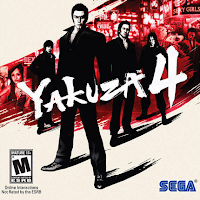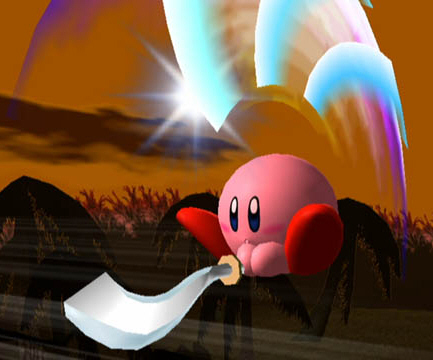This review is based on my experience with the PS3 version of Ultimate Marvel vs. Capcom 3.
Score: 3/5
Last February Capcom answered the prayers of their fans and released Marvel vs. Capcom 3. Now it’s nine months later and Capcom has released Ultimate Marvel vs. Capcom 3. It’s easy to see why they would push out a new version of the game so fast, but it’s just as easy to think of reasons why they shouldn’t have. The Marvel vs. Capcom series is well known for its over the top action and Ultimate MvC 3 follows in grand fashion.
Ultimate MvC3 plays almost exactly the same as original MvC3. You choose three characters and then you proceed to beat the living crap out of your opponent. There are three attack buttons, which correspond to light, medium, and heavy attacks. In place of the fourth attack button that’s standard for most fighting games MvC3 adds a launch button. If you tap the shoulder buttons the characters you’re not using will come in for an assist attack, but if you hold them you can switch which character you’re playing. In an attempt to make the game even more accessible Capcom added a super mode called X-Factor. If you push all four buttons your characters will glow red, gain speed, and receive a large damage boost. Well timed X-Factor usage can completely turn around a match.
 |
| Full screen attacks like this are common in Marvel Vs. Capcom. |
The simplified gameplay has deterred some hardcore fighting game fans from picking up on Marvel vs. Capcom 3. The skepticism is warranted, but it couldn’t be farther from the truth. While it’s easier to pick up on than most other fighting games there is no shortage of high level gameplay. It’s easy enough to pick up on the basics, but if you want to get good you need to learn all the advanced techniques. Just like every other fighting game it takes a great deal of time and effort to get “good”. MvC3 is an excellent fighting game that’s easy to pick up. If you haven’t picked it up, then Ultimate MvC 3 is easy to recommend.
If you already own original MvC3 you’re most likely concerned with the things Ultimate adds and changes. Like most fighting game iterations Ultimate MvC3 adds new characters, stages, balance changes, and small changes to the basic mechanics. The balance changes of the old characters work well, and some characters seem completely new because of it. New characters are the reason most people will be interested in Ultimate. The game adds twelve new characters to the already robust roster of the original game. Capcom did a good job with making each character feel unique. It’s easy to see that there was a great deal of time and effort that went into the new characters, but it’s a shame that the same sense of care didn’t go into the rest of the game.
 |
| Phoenix Wright is one of the fan favorites added to the game. |
The changes to the game mechanics are basic and people who aren’t deep into MvC3 probably won’t care very much. X-Factor can now be used in the air, which makes air combos even crazier than they were before. X-Factor was thought to be overpowered, so Capcom changed it for this game. It lasts for a shorter amount of time, but the attack boost it grants still seems like a bit much to me. The HUD has been overhauled and stands out a bit more on the screen.
Other than new characters and stages there is very little new content to Ultimate MvC3. The arcade mode is still pretty much useless. You fight through six stages until you fight Galactus, the oversized final boss. The payoff is a terrible ending for the character who hit Galactus last. They consist of two or three pictures with text boxes. They are almost all terrible, so it’s not even worth playing through arcade mode unless you want to practice your skills on halfway decent AI. The twelve new characters all get their own endings. I was upset to find out that all of the characters from the previous game do not get new endings. The effort that went into creating the endings seems like it was minimal, so it seems crazy that they wouldn’t make new ones for the old characters.
 |
If you spend enough time to beat arcade mode
you can see terrible pictures like this one! |
The only mode that received worthwhile changes is the online mode. In the original version of the game it was almost impossible to find a match. To make matters worse you would get booted to the main menu whenever the game couldn’t find a match. The net code in Ultimate MvC3 is vastly improved from its predecessor. Finding matches is extremely easy, and the game is good about matching you up with people near your skill level with good connections. Online play still hitches up a bit, but that’s the way online games go these days. The ability to watch matches online is a much welcomed addition as well, but it should have been in MvC3 in the first place.
There are a few things about MvC3 that shouldn’t happen, but they do. I played the PS3 version of this game, so that may be the source of the problem. Upon starting the game a dialogue box pops up asking if you want to search for new DLC. When you say no the game says that it’s updating your player data. There should be absolutely no player data to update before the game has even been played. This problem happens all the time. Every time you go back to the main menu the game will update your player data, which takes an excruciating amount of time. On its own that wouldn’t be a big deal, but the game saves immediately following the player data update. When the game is saving you can’t move around the menu and the game is more or less frozen. Ultimate MvC3 has a mandatory install on the PS3, so load times like this are inexcusable, especially for the second iteration of a game.
 |
The huge character roster in Marvel Vs. Capcom 3
is one of its drawing points. |
Ultimate MvC3 is a great game. It’s a slightly improved version of MvC3 with more characters. I feel as if Capcom could have waited a bit longer to release the game to fix some of the problems and add more content. Before the games release they announced a free post release DLC mode called Heroes and Heralds. It’s an excellent mode, but it was released a month after the games initial release, so I can’t factor its inclusion into a review of the game. Since Ultimate comes not even a full year after its predecessor I can’t comprehend why they wouldn’t hold it back a month in order to tighten everything up a bit and include Heroes and Heralds.
If you didn’t like Marvel Vs. Capcom 3, then you won’t like Ultimate either. Ultimate is made specifically for people who are avid fans of the first game who are hungering for any new content whatsoever and people who play fighting games extremely seriously. If you have MvC3, but don’t really care about the changes then Ultimate is a hard sell. However, if you don’t have MvC3 then Ultimate is a great value at forty dollars.
Note: This review is also posted on Giantbomb.com
-Manny

























